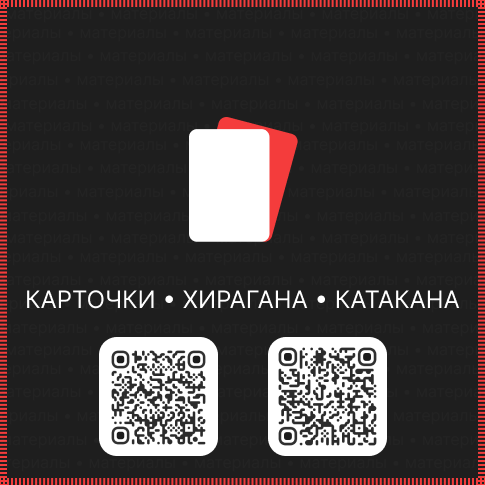

About the creator

Привет! Я Богдан (ник: Nopass), и я начал изучать японский язык.
Вместе с вами я прохожу этот увлекательный путь, делясь всеми новыми знаниями, которые получаю. 🎌
Моя любовь к Японии началась с аниме и манги, и теперь я хочу понять эту культуру глубже. Каждый день я узнаю что-то новое и сразу делюсь этим с вами, чтобы мы могли учиться вместе. 🍣
Здесь вы найдете простые и полезные уроки, которые помогут вам погружаться в японский язык и культуру. Давайте учиться вместе и поддерживать друг друга! 🌸
Спасибо, что вы со мной! Давайте учиться и веселиться вместе! 🚀
(P.S По статистике девушка на баннере привлекает больше людей, поэтому будут вставлять их везде, где только можно)
грамматика
карточки
материалы
кандзи
слова
Карточки • Хирагана • Катакана

Первые материалы для изучения японского языка
Можно просканировать QR-коды и перейти к карточкам для запоминания
А можно и по ссылке:
1. Хирагана - https://recall.cards/shared/decks/rqzauyiiljmnonqczvps
2. Катакана - https://recall.cards/shared/decks/edbihtxamwnprvmyseyk
Show more
материалы
карточки
хирагана
катакана
для всех
Subscription levels

ひらがな探検隊
$ 1,03 per month
• Доступ к еженедельным постам с новыми словами и фразами
• Простые грамматические уроки
• Основы хираганы и катаканы
• Доступ к общему чату для подписчиков

漢字の道
$ 3,2 per month
• Всё, что в уровне "ひらがな探検隊"
• Еженедельные уроки по грамматике
• Уроки по кандзи (10 новых кандзи в месяц)
• Разбор простых японских текстов (манга, короткие рассказы)
• Эксклюзивные статьи и посты о японской культуре

侍の知識
$ 5,2 per month
• Всё, что в уровне "漢字の道"
• Еженедельные интерактивные задания и тесты
• Глубокие уроки по кандзи (20 новых кандзи в месяц)
• Разбор сложных текстов и медиа (аниме, фильмы)
• Индивидуальная обратная связь на письменные и устные задания

日本語の達人
$ 10,4 per month
• Всё, что в уровне "侍の知識"
• Расширенные интерактивные задания и тесты
• Дополнительные уроки по кандзи (30 новых кандзи в месяц)
• Глубокий разбор японской литературы и медиа
• Личные рекомендации по учебным материалам и планам
• Приоритетное участие в конкурсах и мероприятиях
